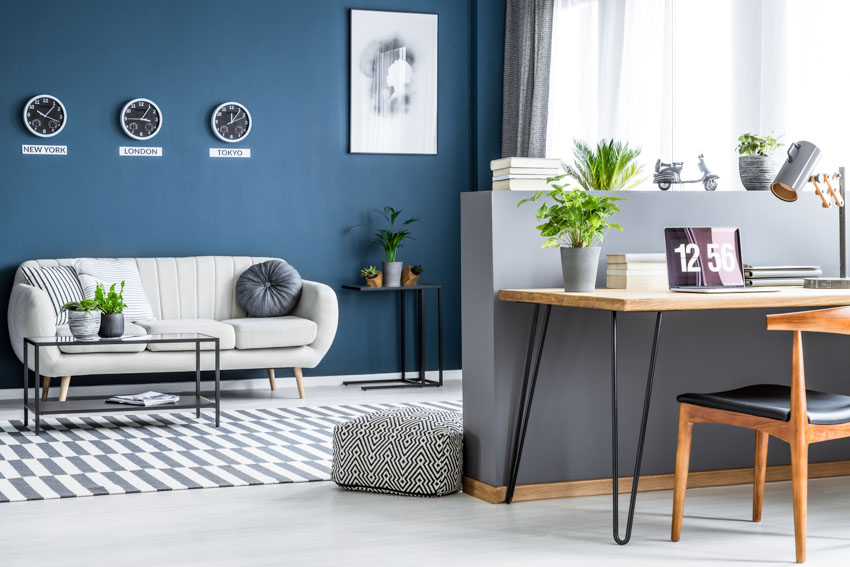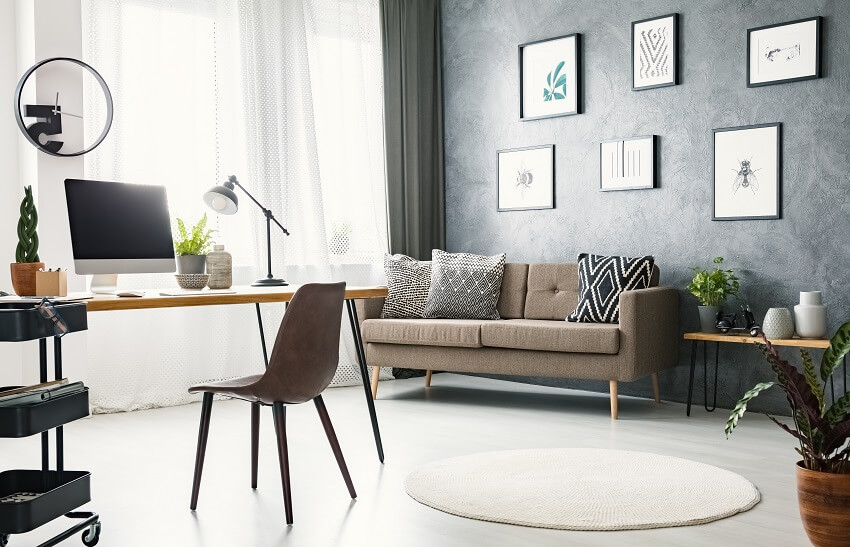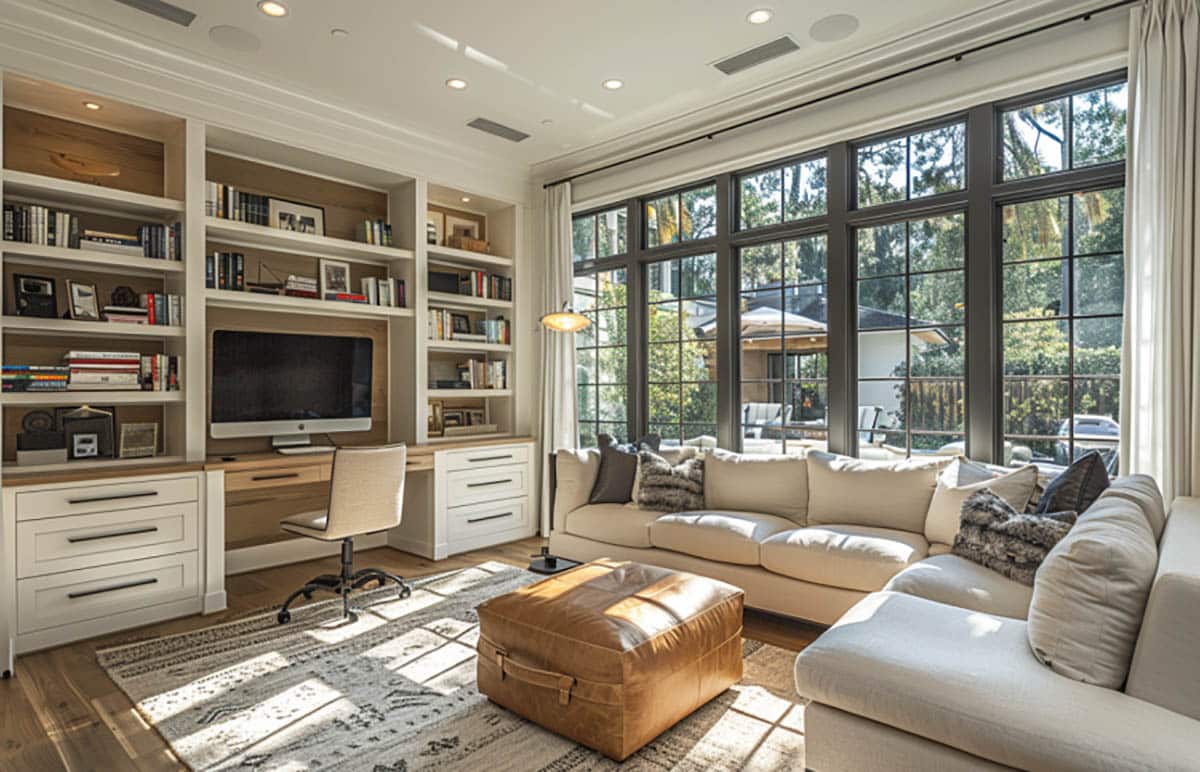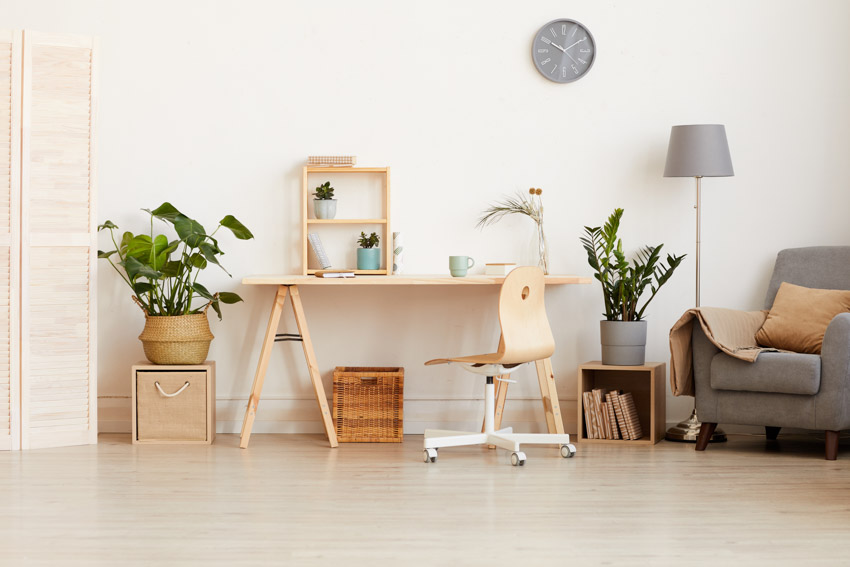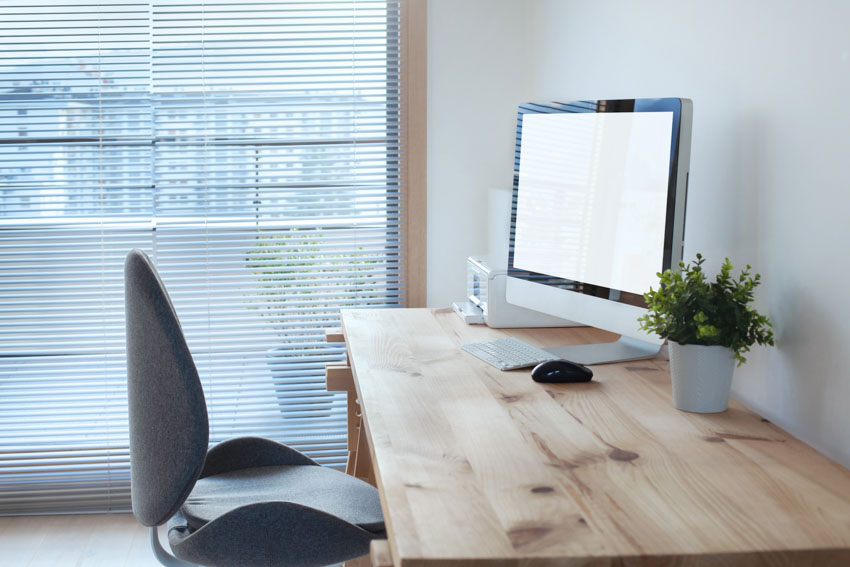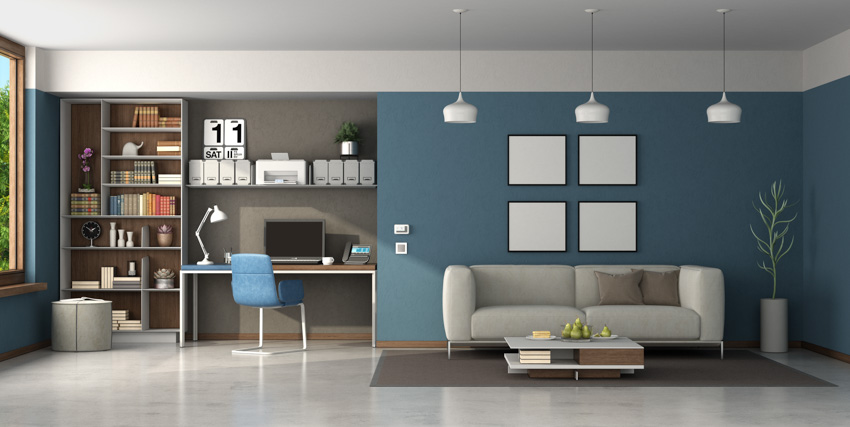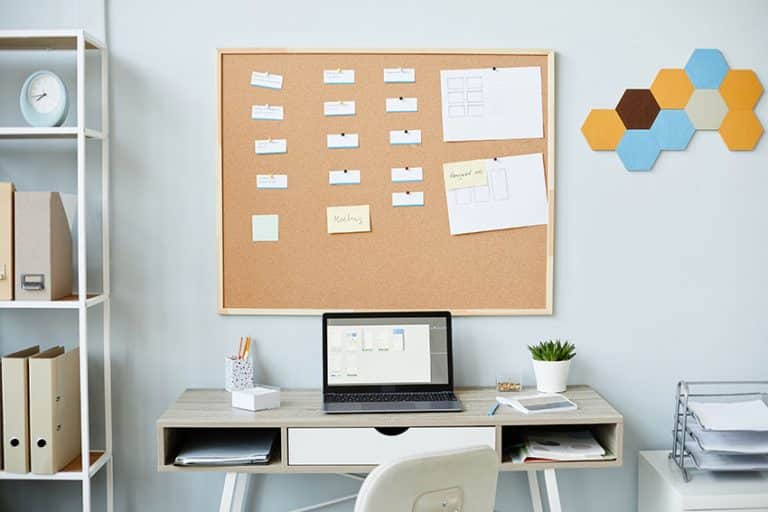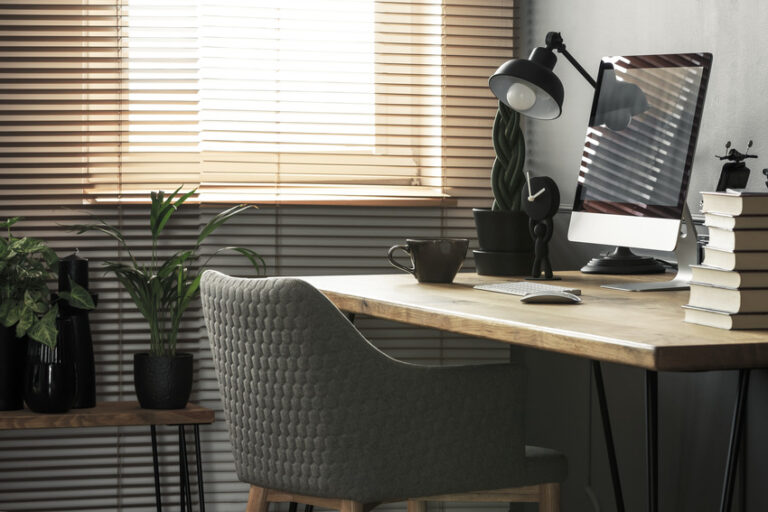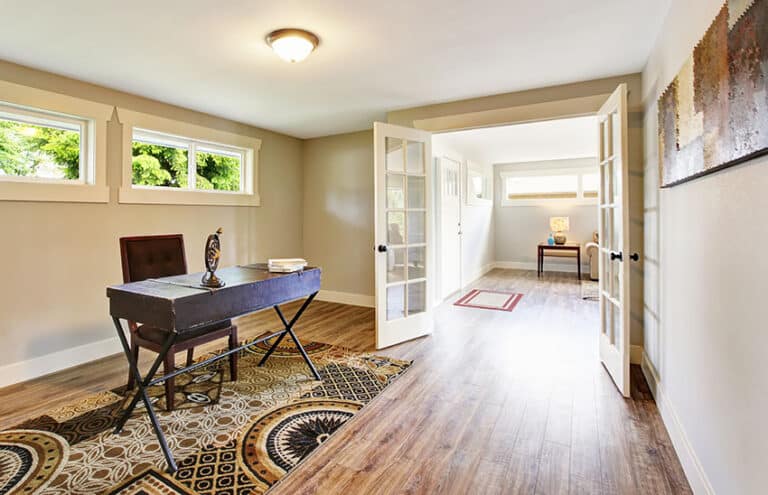Work from Home in Style With These Living Room Office Ideas
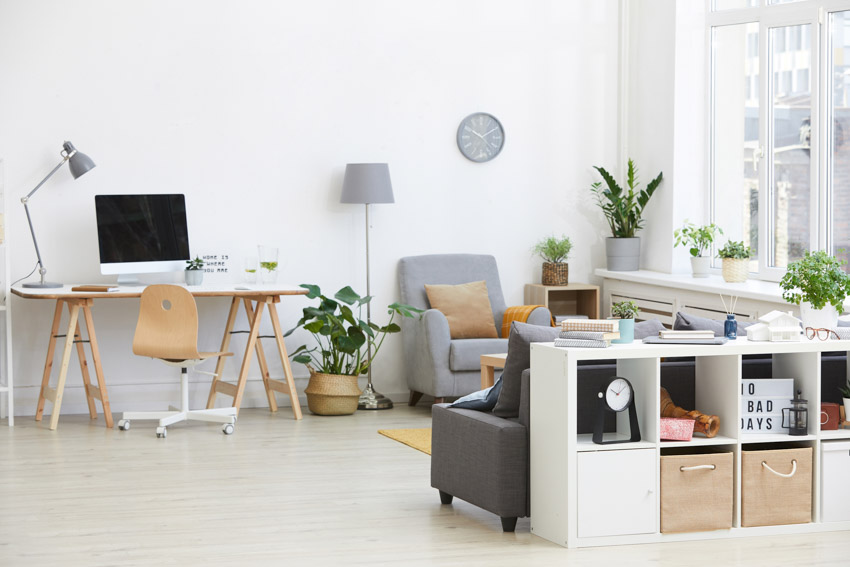
The modern working style has transformed from the standard office-based setup to a WFH or work-from-home setup, which is what makes this setup a good idea to explore. But let’s face it, not everyone has enough space to have one, and what you can really do is incorporate it into one of the common rooms at home. One of the more popular combinations is the living room and home office pairing. This combination can be a good way to utilize this space for working remotely from home.
The living room is an excellent area to incorporate your home office into, primarily because it screams comfort. Working is all about productivity, and while too much comfort can be detrimental, too little is also not good. The living room can provide just enough comfort to help you focus on your work but not too much that you will be tempted to rest and sleep.
Creating A Home Office In The Living Area
Choosing a living room office combination means you need to find a good way of mixing the functions of both spaces into a seamless new area that can accommodate multiple activities.
A home with enough space can accommodate an open area where the living room and home office areas are in one room and without partitions. If you have a smaller house, a living room office combination with thoughtful storage and space-saving furniture is recommended.
Make Use of Unused Nook: With this room combination, you might even be able to make use of and maximize forgotten spaces in your home. Whether it’s the space behind your sofa or a hallway often neglected, there is a space somewhere in your living room that goes unused, and you can make the most out of it.
Look for unused nooks in your home, specifically in the living room, that you can transform into a workstation. You can check out the corners of the room or under the stairs if you have enough space to set up a desk and a chair.
Using existing built-in cabinets for an office can be an excellent way to designate your desk space. If you want to define the space more, you can use the sofa as a divider to somehow separate and workspace from the living room.
Use Shelves & Optimize Them As A Working Spot: Another idea, particularly if you have a small living room and a tight space is to make use of the wall shelving. A compact wall shelf can serve as a workstation where you can conveniently place your laptop on and get work done. Easily pull up an ergonomic chair by the shelf and simply fill in the remaining spaces with work and research materials and books.
How To Convert A Room To An Office
Converting the living room and furnishing the office for remote work means making the most out of your limited space. Incorporating all the elements of the home office in the room can be accomplished by creating a space entirely for work. It can also be done by incorporating desks and chairs or using multifunctional furniture.
Create an Open Office Space: With a large living area, you have more freedom to build your own workspace with a simple desk.
You can be stylish in building your office by mounting a desk on a wall, appearing to float. Separate and emphasize your workspace in the room by using a small rug in the area. Decorate the wall above your desk with your favorite artwork or create a gallery wall that fits the theme of your room.
Work Station Line Up: Another way is to line up a workstation by setting up multiple desks on the wall. If you’re now the only one working at home, creating a workstation can be a creative choice to consider. The setup of these desks can be considered the “home office.”
Consider a Built-in Desk: A custom built-in could be an excellent way to balance work life and entertainment. These units can be designed to fit perfectly into the existing room you have, saving space and looking stylish. With customization you could get the exact storage, desk level and lighting needs you want. They also can serve the dual purpose of workspace functionality and act as a decorative element to enhance the room design.
Fit a Desk in the Hallway: If you have a hallway near the room that is randomly used and has enough space to fit a desk. One thing you can do is add a console in the hallway or even just near the entry to the living room. A console is big enough to function as a desk but small enough to fit in hallways.
Utilize Natural Lighting: By setting your workstation so it can benefit from natural light, you can increase your productivity and reduce eyestrain. Make sure you have proper office window coverings to control the level of glare when needed.
Don’t Forget Design & Decor: Keep your living space uplifting by painting the space a lighter neutral color that helps keep the room bright for a better work environment. Add decor items such as mirrors, lamps, and other light fixtures to provide light in the evening when you may be working late.
Consider elements such as a bookcase, bookshelves, or entertainment center that can store your work or business materials out of site when not in use. In addition, don’t forget organization bins to keep your office accessories within easy reach.
Choosing A Chair
When choosing an office chair for your transformed living room, you need to take into account your comfort and productivity while working and at the same time the aesthetic and look it can contribute to the room. For your comfort and productivity, a good chair considers the following factors:
• Adjustability: Choose ergonomic chairs that can easily have their height adjusted to what you’re comfortable with. Most office chairs have 5 adjustments but some can have as many as 14 adjustments.
• Armrest: The armrests of a good work chair must also be adjustable to cater to your comfort.
• Backrest: This is an important factor, especially if you spend most of your time sitting down. The recommended width for an ergonomic office chair is between 12 to 19 inches.
• Lumbar Support: More than just the right width to accommodate your back comfortably, it is also necessary to have enough lumbar support that can cater to the curve of the spine.
This feature will help fit your lower back comfortably in the chair and prevent back strain, which can be a challenge when working on a desk.
• Fabric: Chairs should be made from breathable fabric that can keep them from getting hot and uncomfortable after sitting on them for hours. Padding installed on the back is also recommended for additional comfort.
• Swivel Base: Choose a freely swiveling chair that can help you access different parts of the desk whenever you need to. It will help you avoid arm fatigue by overextending your arm and straining to reach items on the desk.
• Wheel Base: Make sure that the chair you choose has a wheelbase that can seamlessly roll around the floor. Similar to a swiveling base, this will also avoid needing to overextend your arm just to reach for different items on the desk.
More than these functional factors in choosing your office chair, if you use it in the living room, you might as well match its appearance with the style you have in the area.
Adding a recliner or chair with an ottoman may give you a place for reading or contemplation. If you’re really short on space in the home, you may even want to consider buying a sofa bed to add even more functionality to the space for friends and family to sleep over.
Choosing An Office Desk
When turning or combining your living room into a home office, consider the space you can use and the vibe in the room when choosing a desk.
The great thing about installing work desks in the living room is that you can challenge your creativity in installing and incorporating one in your room. Some of these ideas are:
Use the Sofa’s Center Table/Coffee If you want it as simple as possible, you can sit on the sofa and use the current center table you have in the living room as a desk. You just need to set up your laptop on the table and start working.
Look for tables that are at a comfortable height for typing on your laptop and allow for interruption-free work time. Since this location is probably in front of the television, there will be a distraction you will need to consider. And if you share the space with other people, you will need to be able to work effectively even with that distraction.
Save-spacing Foldable Desks: A fold-out desk can be the solution to your issues with space. You can tuck it away when not in use, and for work hours, have it set up in the location where your coffee table or center table is, and the sofa can serve as your office chair.
Use An End Table That Transforms Into A Desk: If you have an end table that accompanies your sofa, you can use it as your budget desk. One disadvantage you will experience though is that since the table is small, you have limited space in your “desk.” This can work if you have a small laptop and won’t need space for other office items.
Since this type of desk is foldable, it is temporary, and so you would need to pack up at the end of the day (Which can be a real hassle!).
Install Desks As A Shelf: Most home offices use an executive desk, and you can also install it and use it differently but have it function as a shelf.
With enough storage space (with its drawers), you can keep files, office equipment and supplies in them. However, when not in use, you can use the desk as a shelf and put books, vases, and other ornaments on it.
Make sure to choose a small to medium-sized executive desk to save space! You can also use a writing desk if you feel like an executive desk is too formal to consider.
Floating Fold-out Desk: Similar to a folding desk, this type of desk can easily be tucked away when not in use. The difference is that since it’s mounted on the wall, you don’t have to find a corner or cabinet to store it. You just have to fold the desk then and there.
Convenient as it may be, these floating fold-out desks are not aesthetically pleasing to look at. You might still need to find a way to hide it when not in use, like a curtain. And you will also have to pack up every time you finish work at the end of the day.
Converting A Formal Living Space Into An Office
Converting your formal living room into a home office takes a bit of creativity, especially if you have limited space, but it’s possible. Transforming your space will require prioritizing interior elements that are found in offices rather than seeing more elements found in living areas.
Some of the elements you would need to include in your workspace are a desk to accommodate your computer, an ergonomic chair, and the proper office lighting that can support your productivity. With these elements, it is relevant that you integrate them seamlessly and make them work with the layout of your living room.

